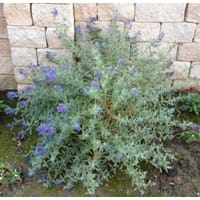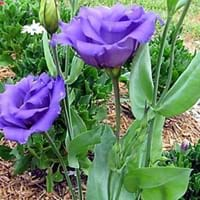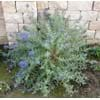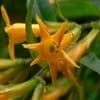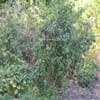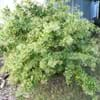Life Span
Perennial
Biennial
Origin
China, Japan
Southwestern United States, Mexico
Types
Not Available
Not Available
Habitat
Well Drained
gardens, Grassland, River side
USDA Hardiness Zone
6-9
Not Available
Sunset Zone
4, 5, 6, 7, 8, 9, 14, 15, 16, 17, 18, 19, 20, 21, 22, 23, 24
21,22
Habit
Oval or Rounded
Upright/Erect
Minimum Width
Not Available
Flower Color
Blue Violet
Blue, Lavender, Blue Violet
Flower Color Modifier
Not Available
Bicolor
Fruit Color
Non Fruiting Plant
Non Fruiting Plant
Leaf Color in Spring
Gray Green
Gray Green
Leaf Color in Summer
Gray Green
Gray Green
Leaf Color in Fall
Gray Green
Gray Green
Leaf Color in Winter
Not Available
Light Green
Plant Season
Summer, Fall
Spring, Summer
Sunlight
Full Sun
Full Sun, Partial Sun
Type of Soil
Loam, Sand
Clay, Loam, Sand
The pH of Soil
Acidic, Neutral
Neutral, Alkaline
Soil Drainage
Well drained
Well drained
Bloom Time
Late Summer, Early Fall
Spring, Late Spring, Early Summer, Summer, Late Summer
Tolerances
Drought
Not Available
Where to Plant?
Ground, Pot
Container, Ground, Pot
How to Plant?
Cuttings, Rooted stem cutting
Seedlings, Stem Planting
Plant Maintenance
Medium
Medium
Watering Requirements
Needs less watering, Water Deeply
Keep the ground moist but not water-logged, Requires watering in the growing season, Water more in summer
In Summer
Lots of watering
Lots of watering
In Spring
Moderate
Moderate
In Winter
Average Water
Average Water
Soil pH
Acidic, Neutral
Alkaline, Neutral
Soil Type
Loam, Sand
Clay, Loam, Sandy
Soil Drainage Capacity
Well drained
Well drained
Sun Exposure
Full Sun
Full Sun, Partial Sun
Pruning
Remove damaged leaves, Remove dead branches, Remove dead flowers, Remove dead leaves, Remove dead or diseased plant parts, Remove deadheads
Remove damaged leaves, Remove dead branches, Remove dead leaves
Fertilizers
All-Purpose Liquid Fertilizer, Apply N-P-K
All-Purpose Liquid Fertilizer
Pests and Diseases
bees, Red blotch, Whiteflies
Red blotch
Plant Tolerance
Drought, Drought and Wet Site, Variety of soil types
Drought
Flower Petal Number
Single
Single
Foliage Texture
Medium
Medium
Foliage Sheen
Matte
Matte
Attracts
Butterflies
Bees, Butterflies
Allergy
Not Available
no allergic reactions
Aesthetic Uses
Beautification, Ornamental use, Showy Purposes
Beautification, Bouquets
Beauty Benefits
Not Available
Not Available
Environmental Uses
Air purification
Air purification
Medicinal Uses
Not Available
No Medicinal Use
Part of Plant Used
Not Available
Flowers
Other Uses
Used as Ornamental plant
Showy Purposes, Used as Ornamental plant
Used As Indoor Plant
No
Sometimes
Used As Outdoor Plant
Yes
Yes
Garden Design
Foundation, Mixed Border
Cutflower, Edging, Feature Plant, Foundation
Botanical Name
CARYOPTERIS incana
EUSTOMA grandiflorum 'Florida Blue'
Common Name
bluebeard
you shu
Florida Blue Lisianthus, Lisianthus
In Hindi
Bluebeard
फ्लोरिडा Lisianthus
In German
Blaubart
Florida Lisianthus
In French
Bluebeard
Floride Lisianthus
In Spanish
Barba Azul
lisianthus Florida
In Greek
Κυανοπώγωνα
Φλόριντα lisianthus
In Portuguese
Barba Azul
Florida Lisianthus
In Polish
Sinobrody
Florida Eustoma
In Latin
Bluebeard
Florida Lisianthus
Phylum
Streptophyta
Not Available
Class
Not Available
Not Available
Order
Lamiales
Gentianales
Family
Verbenaceae
Gentianaceae
Genus
Caryopteris
Eustoma
Clade
Angiosperms, Asterids, Eudicots
Angiosperms, Asterids, Eudicots
Tribe
Not Available
Not Available
Subfamily
Not Available
Paperveroideae
Number of Species
Not Available
Difference Between Bluebeard and Florida Lisianthus
If you are confused whether Bluebeard or Florida Lisianthus are same, here are some features about those plants to help you choose better. Many people think that these two plants have the same characteristics, but one can see Bluebeard and Florida Lisianthus Information and learn more about it. Fertilizers required for proper growth of Bluebeard are All-Purpose Liquid Fertilizer and Apply N-P-K, whereas for Florida Lisianthus fertilizers required are All-Purpose Liquid Fertilizer. Hence, one should know the basic difference between Bluebeard and Florida Lisianthus if you are planning to have them in your garden to enhance its beauty.
<
Flowering PlantsImportance of Bluebeard and Florida Lisianthus
Want to have the most appropriate plant for your garden? You might want to know the importance of Bluebeard and Florida Lisianthus. Basically, these two plants vary in many aspects. Compare Bluebeard and Florida Lisianthus as they differ in many characteristics such as their life, care, benefits, facts, etc. Every gardener must at least have the slightest clue about the plants he wants to plant in his garden. Compare their benefits, which differ in many ways like facts and uses. The medicinal use of Bluebeard is Not Available whereas of Florida Lisianthus is No Medicinal Use. Bluebeard has beauty benefits as follows: Not Available while Florida Lisianthus has beauty benefits as follows: Not Available.
Compare Facts of Bluebeard vs Florida Lisianthus
How to choose the best garden plant for your garden depending upon its facts? Here garden plant comparison will help you to solve this query. Compare the facts of Bluebeard vs Florida Lisianthus and know which one to choose. As garden plants have benefits and other uses, allergy is also a major drawback of plants for some people. Allergic reactions of Bluebeard are Not Available whereas of Florida Lisianthus have no allergic reactions respectively. Having a fruit bearing plant in your garden can be a plus point of your garden. Bluebeard has no showy fruits and Florida Lisianthus has no showy fruits. Also Bluebeard is not flowering and Florida Lisianthus is not flowering . You can compare Bluebeard and Florida Lisianthus facts and facts of other plants too.
